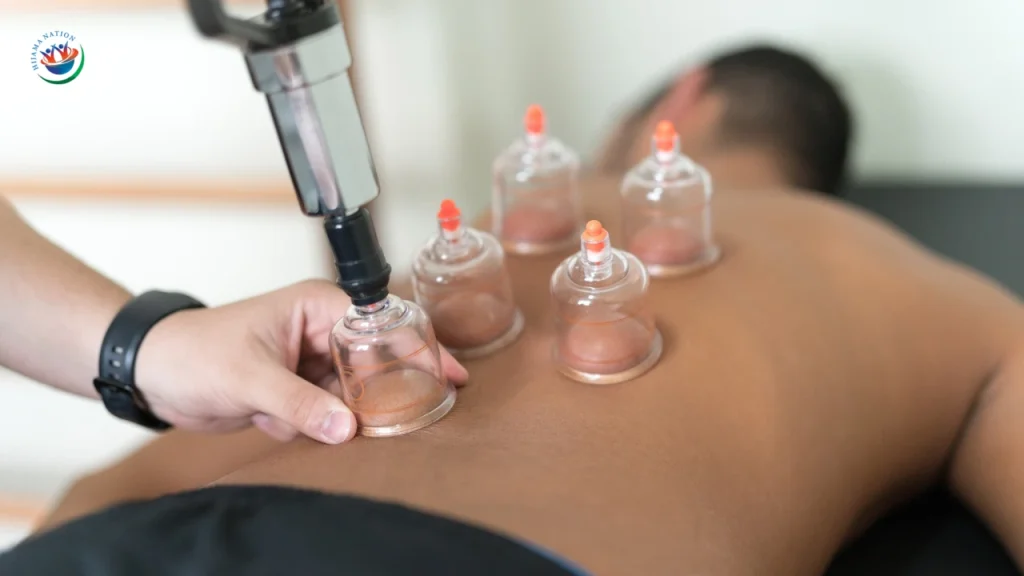Bench press with lower back pain can be challenging. You want to lift without making your pain worse. If you have severe back pain, exercise can make it worse. Always follow your physician’s advice before working out. If your doctor recommends continuing exercise, read this blog to learn safe techniques that help strengthen your muscles and reduce pain.
Important Research and Safety Insights
Lower back pain is one of the most common musculoskeletal issues worldwide. According to the World Health Organization (WHO), about 60-70% of adults experience lower back pain at some point in their lives. Studies from the American College of Sports Medicine (ACSM) emphasize the importance of core stability during lifting exercises to reduce spinal stress.
A study published in the Journal of Strength and Conditioning Research found that improper bench press form increases lower back pressure, leading to muscle strain and injury. Experts recommend maintaining a neutral spine position and avoiding excessive arching to minimize risks. Using core stability techniques can also enhance support and reduce discomfort.
In severe pain or injury, if you are going to bench press with lower back pain, it is essential to stop exercising and consult a healthcare professional. Ignoring pain signals may worsen the condition, leading to long-term damage. Rehabilitation exercises guided by a physical therapist can help in recovery and strengthen back muscles.
Essential Tips for Bench Press with Lower Back Pain

1. Warm Up Properly
Start with a gentle warm-up to increase blood flow. Do some light cardio for five minutes. Stretch your lower back, hamstrings, and hips. This prepares your muscles for the bench press.
2. Use the Right Bench Press Form
Form is crucial when you have lower back pain. Lie flat on the bench. Keep your feet planted on the ground. Arch your back slightly but avoid excessive arching. Engage your core to support your spine.Otherwise bench press with lower back pain will end up making condition worst
3. Choose the Right Weight
Avoid lifting heavy if you have lower back pain. Start with lighter weights and increase gradually. Focus on controlled, steady movements. Lifting too heavy can strain your back and worsen pain.
4. Support Your Lower Back
Use a rolled-up towel or lumbar support under your lower back. This helps maintain the natural curve of your spine. It also reduces pressure during the lift.
5. Engage Your Core
Tighten your core muscles before lifting. This stabilizes your spine and prevents strain. Keep your core engaged throughout each rep.
6. Avoid Leg Drive
Using your legs to push the weight up can stress your lower back. Focus on using your chest and arms instead. Keep your feet steady and flat on the ground.
7. Focus on Breathing
Inhale before lowering the bar and exhale as you press it upward. Controlled breathing helps stabilize your core and reduces strain on your back.
8. Stop if You Feel Pain
Pain is a warning sign. If you feel sharp or shooting pain, stop immediately. Rest and assess your form before continuing.
Try Hijama Cupping Therapy for Your Back Pain

Hijama cupping therapy is a natural treatment that improves blood flow and helps relieve back pain. It promotes healing by removing stagnant blood and boosting circulation. Many people find relief from chronic pain through cupping. Consider adding this therapy to your recovery routine for better results.
Suggested Diet for Lower Back Pain Relief
A balanced diet can help reduce inflammation and support muscle recovery. Here are some dietary tips to help with lower back pain:
- Anti-Inflammatory Foods: Include foods rich in omega-3 fatty acids like salmon, flaxseeds, and walnuts. These reduce inflammation and promote healing.
- Calcium and Vitamin D: Strengthen bones by consuming dairy products, leafy greens, and fortified cereals. Vitamin D from sunlight and supplements also supports bone health.
- Magnesium-rich foods: Magnesium helps relax muscles and reduce spasms. Eat foods like bananas, almonds, and whole grains.
- Hydration: Staying hydrated keeps your spinal discs healthy. Drink at least 8 glasses of water daily.
- Protein for Muscle Repair: Lean meats, beans, and protein shakes help repair muscle tissue and strengthen your back.
- Avoid Processed Foods: Reduce intake of processed sugars and trans fats, which can increase inflammation.
Final Thoughts
Bench press with lower back pain requires caution and proper technique. Focus on your form, use support, and engage your core. Start with light weights and build strength gradually. If pain persists, seek medical advice. Lifting with care will help you stay strong without making your condition worse.
